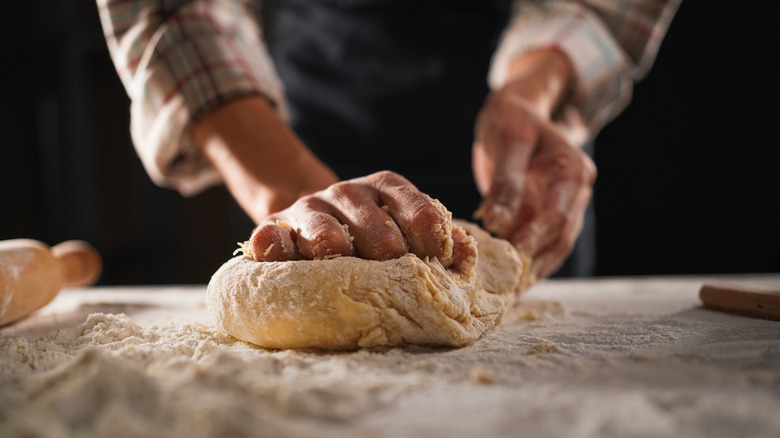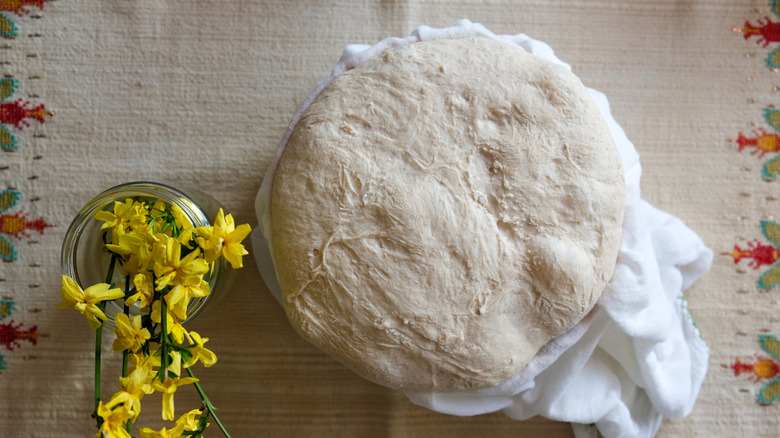Why Your Fridge Might Be The Key To Better Bread
The key to successful breadmaking is patience, and using your fridge extends that patience quite a bit. However, cold-fermenting is a fantastic way to give any dough a bit of sourdough tang. Food Republic spoke with Sheena Otto, resident baker of the Park Slope Farmers Market, to learn more about what cold fermentation can do for bread dough and how it develops intense and lovely flavors. While Otto noted that "'better flavor' is subjective," she also stated that proofing your dough in the refrigerator "will give the finished loaf a tangier flavor, which some people like, and some people don't."
"Proofing the dough in the fridge slows the yeast down, giving the bacteria and acids in the dough more time to flavor the loaf," Otto told us. "And cold fermentation is best suited for lactic and acetic acid production, which is what's responsible for the tangier flavor in bread that is cold-fermented." Low temperatures aren't hostile to yeast, but it does make them lazier. If you leave your dough to proof at room temperature, the yeast leavens your dough rapidly, but it leaves little room for all those acid-producing bacteria to lower the pH balance of your bread. Cold fermentation is all about striking the balance between your yeast's leavening powers and the flavor created by acids.
In addition to flavor, proofing dough at low temperatures improves its stretchiness and gas retention. This makes it easier to work with and compensates for the slower release of carbon dioxide from slow-reproducing yeast. Cold fermentation may be an indispensable part of high-quality bread like restaurant-quality pizza dough, but even the most amateur baker can do it at home.
How to cold ferment dough
After you've mixed your ingredients and kneaded your dough, it's time to start the cold ferment. Like proofing at room temperature, the goal of cold-proofing is to let your dough double in size. However, unlike warmer temperatures, you can extend the fermenting process anywhere between 24 and 72 hours.
You'll want to keep your dough at about 41 degrees Fahrenheit. This is the optimum temperature to lull your yeast to sleep while providing a good environment for acid-producing bacteria. After 30 minutes in the fridge, remove your dough and fold it to ensure it cools evenly. Repeat this step after four hours to guarantee even temperatures and fermentation rates. If you skip this step, you risk some parts of your dough being tangier or more filled with gas than others, creating an uneven loaf.
Once the dough's temperature evens out, the process becomes hands-off unless you want to include more folds to strengthen its gluten structure. Keep in mind that the longer your dough cold ferments, the chewier and tangier it will be. If you want all that tang, but also a soft bread, try using a sourdough starter in your dough and fermenting for only 24 hours rather than 72. You can even incorporate sourdough discards into pizza dough if you want a softer crust with complex flavor. Before baking, let your dough come to room temperature by sitting in your kitchen for two hours.


